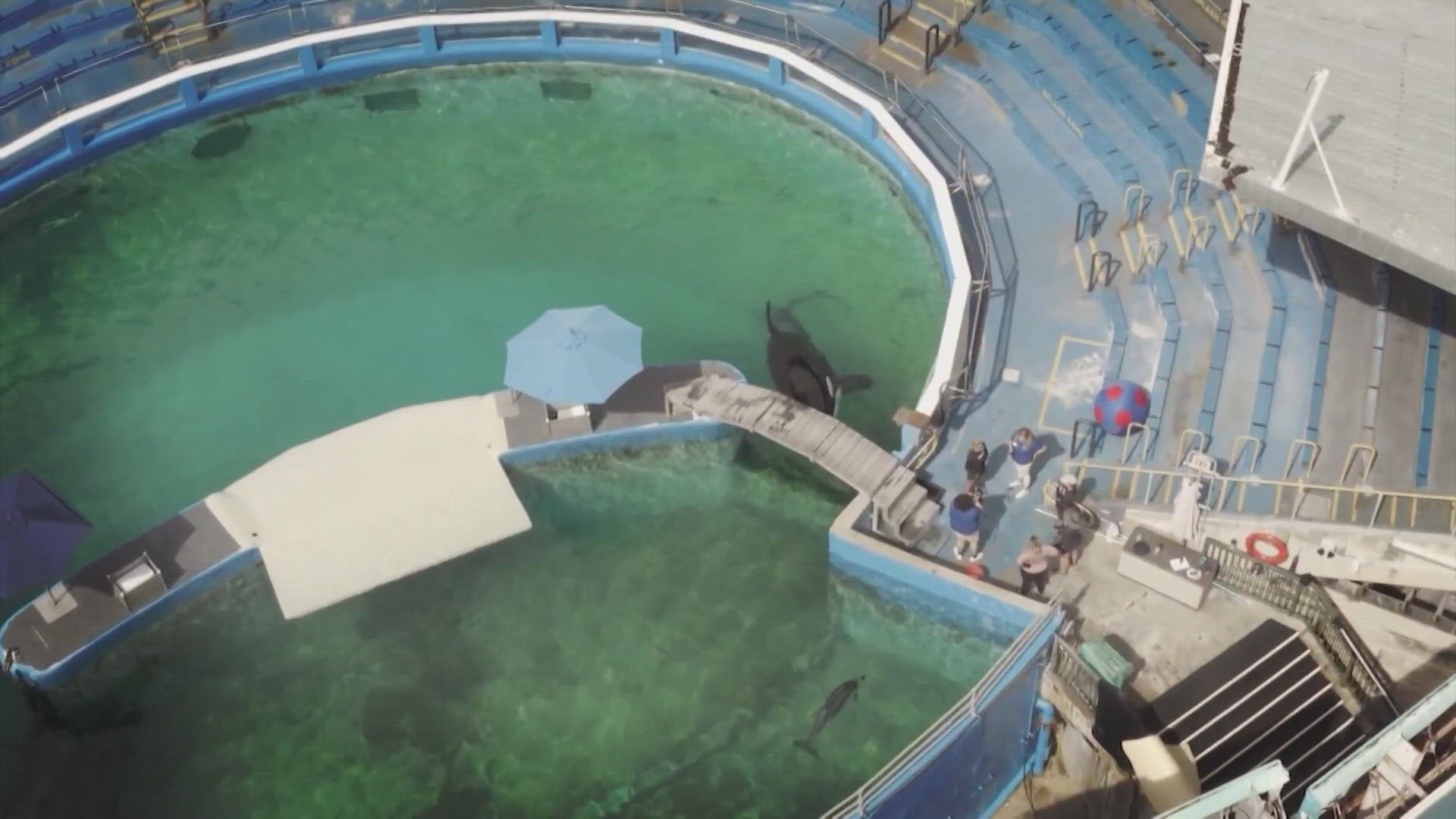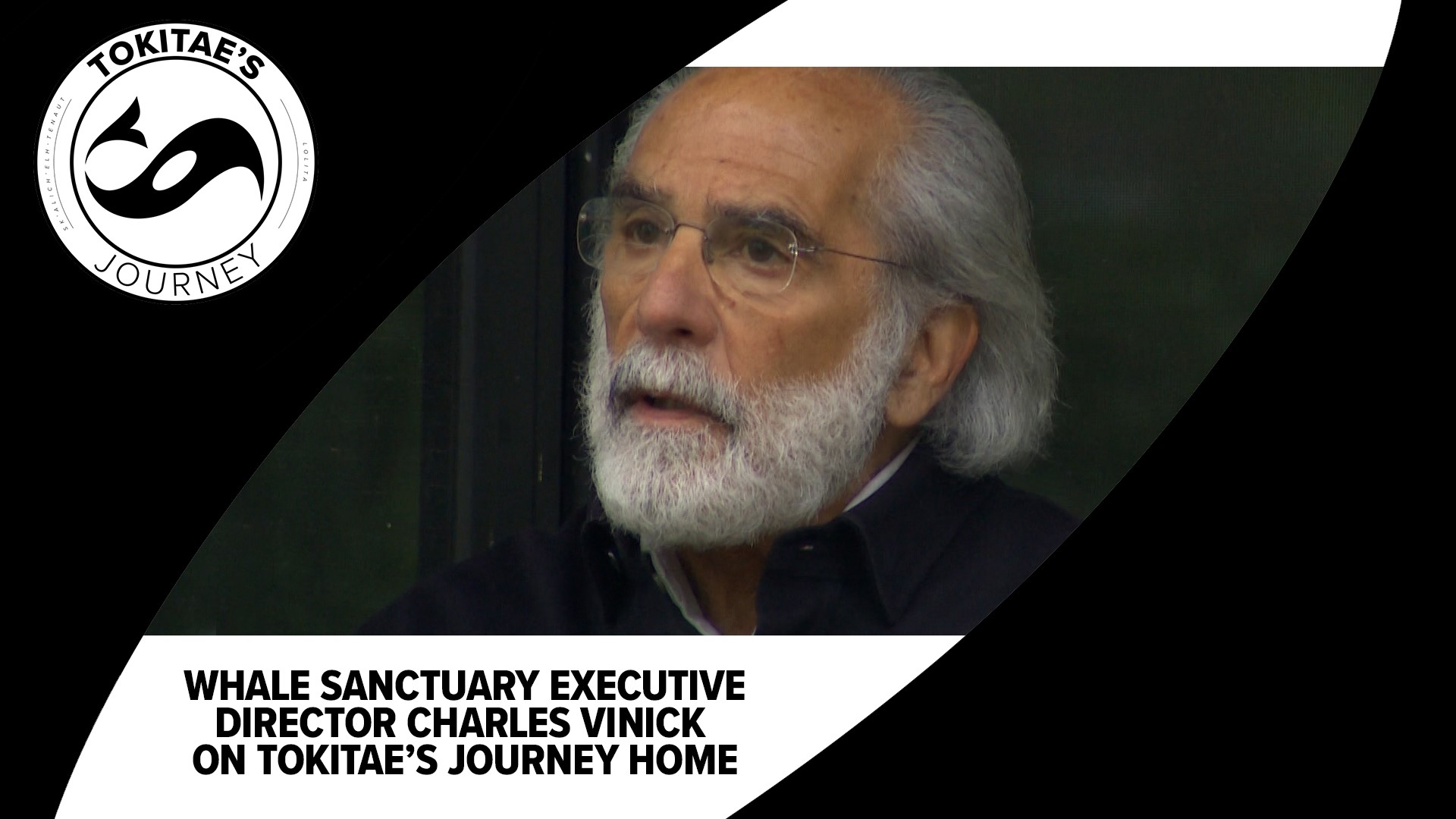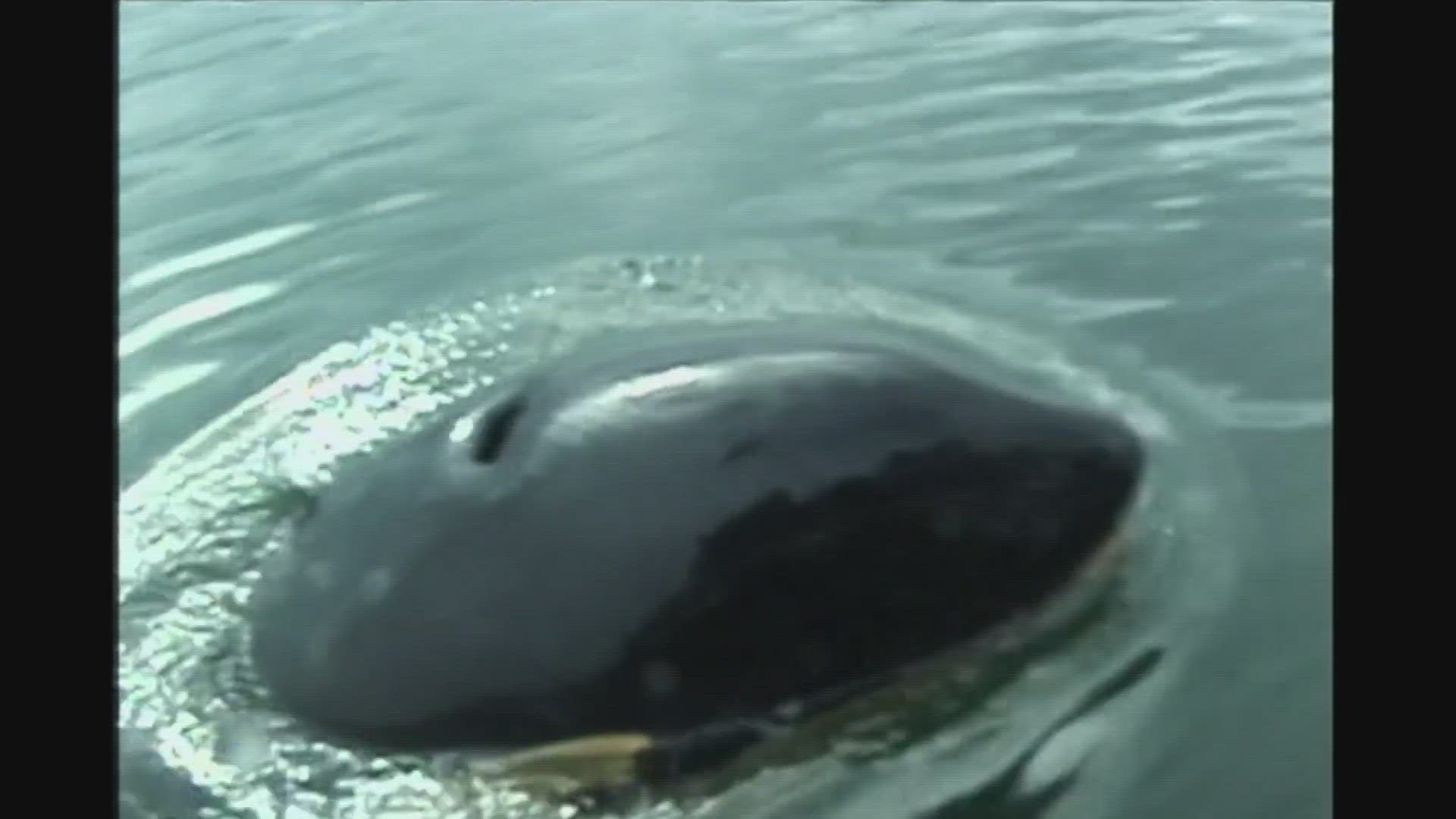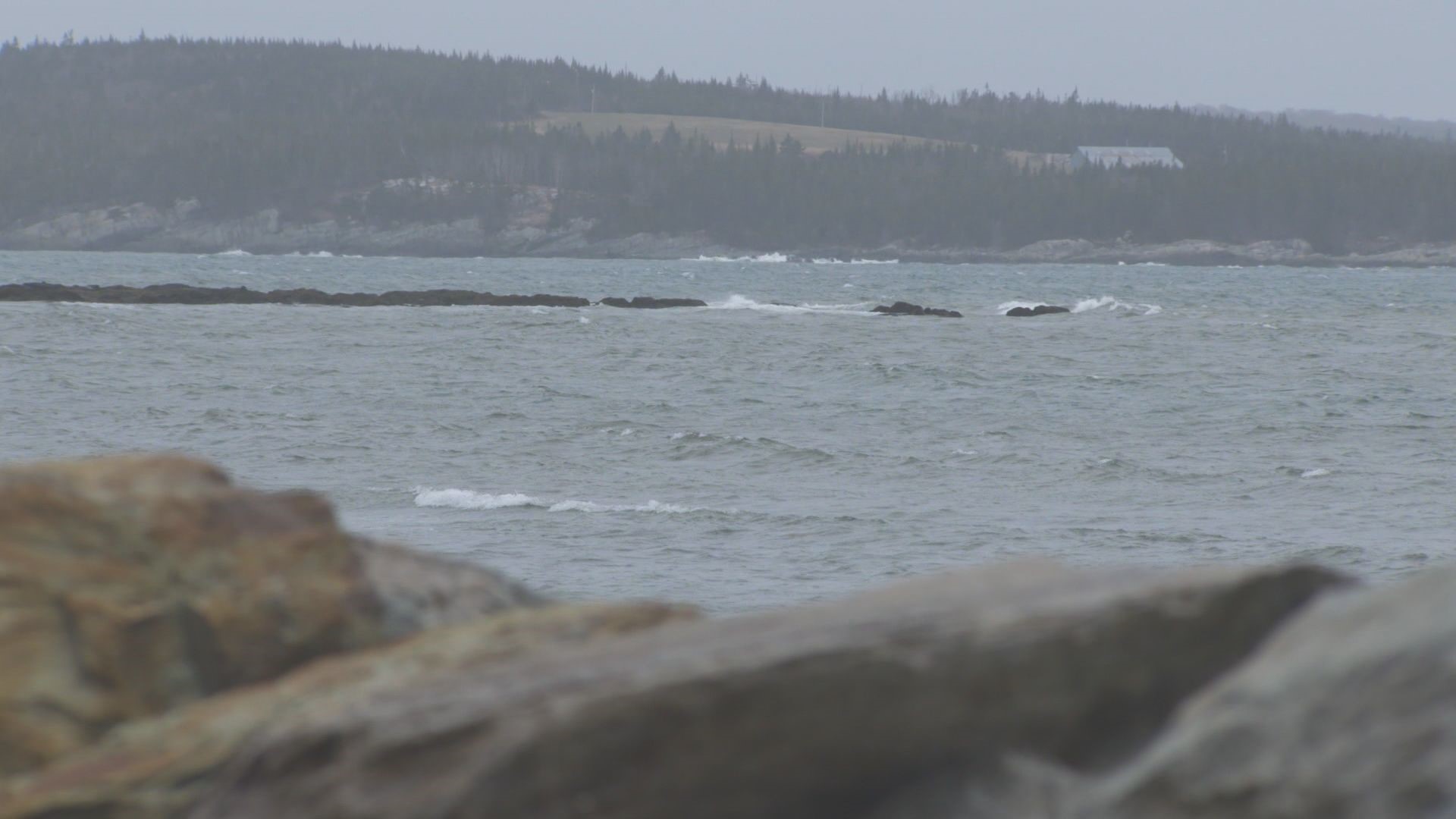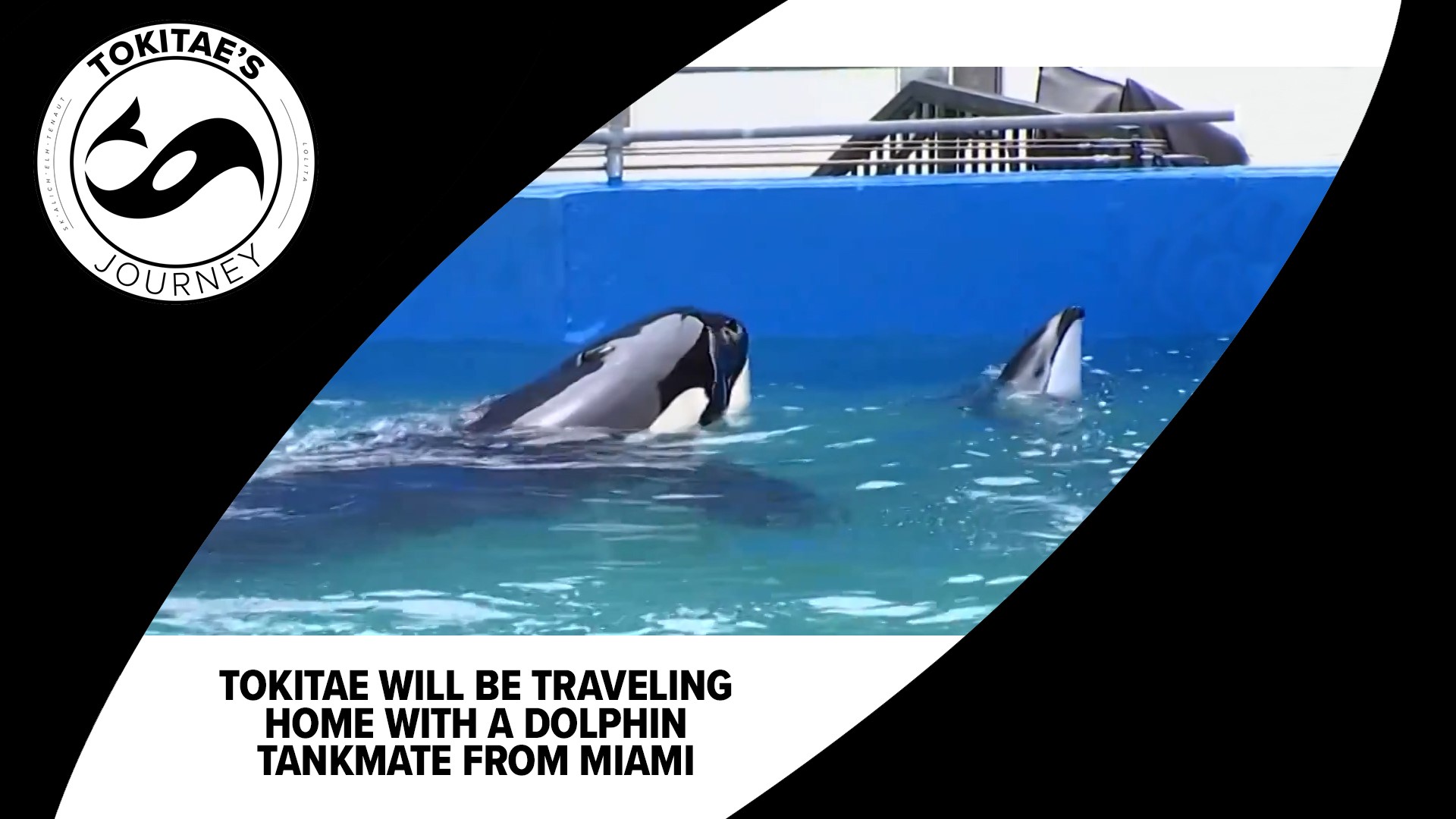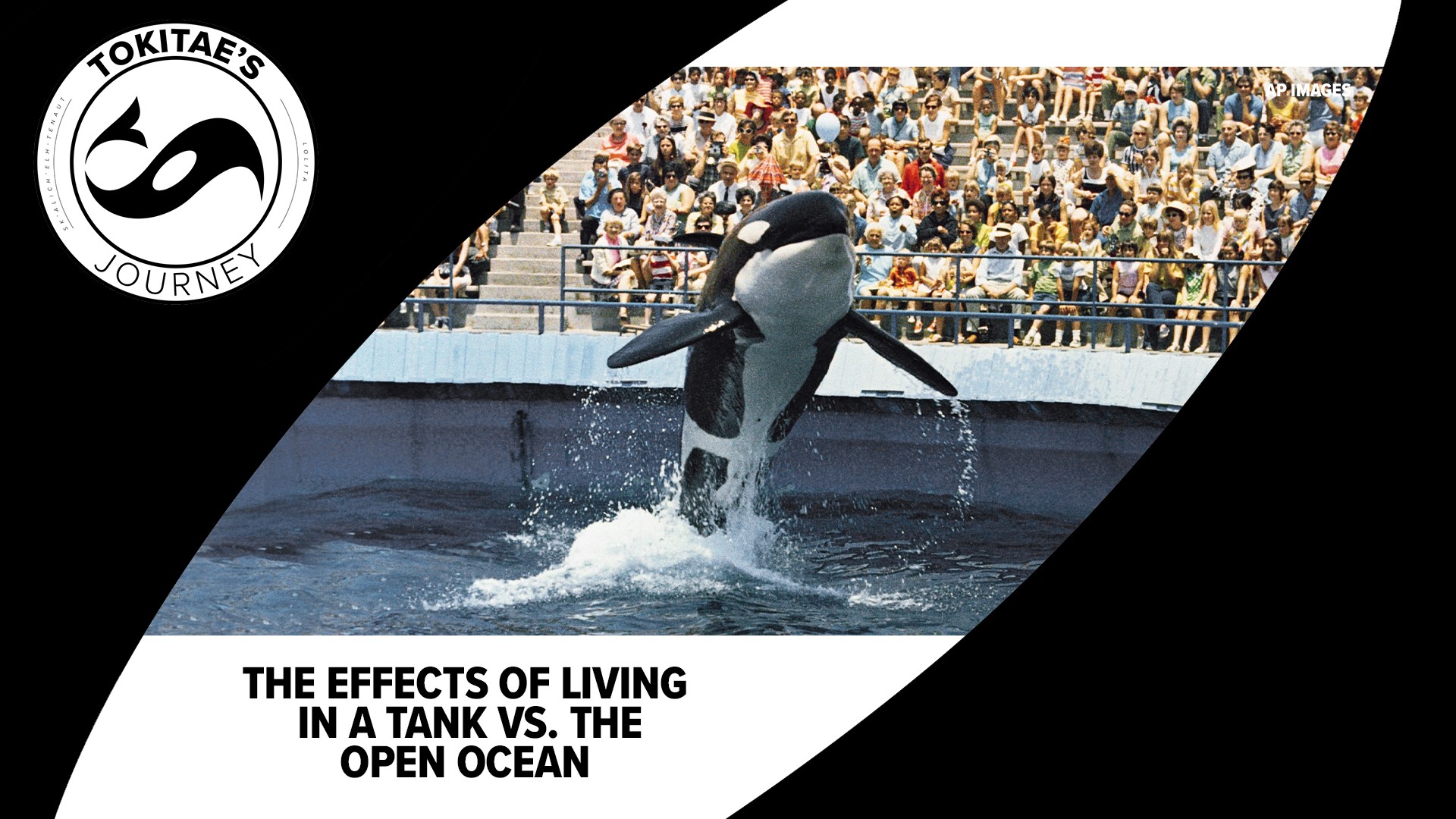Tokitae's Journey
From the Salish Sea to the Miami Seaquarium - and possibly back again. After a years-long fight, plans are finally coming together to bring Tokitae back home.

For most of her life, Tokitae has lived in a concrete tank at the Miami Seaquarium. The Lummi Nation, activists and animal welfare advocates have been fighting for years to bring her back to the Salish Sea.
At last - the aquarium where she currently resides has agreed to begin the process to send the last Southern Resident orca in captivity back to her native waters.
KING 5's reporting tracks Tokitae's journey from her violent capture in the Salish Sea, to her decades at the Miami Seaquarium - and the efforts to bring her back again.
A timeline of Tokitae's journey Tokitae was captured from Puget Sound at just 4 years old
Tokitae is the last surviving orca of the whales that were captured from Puget Sound and sold into captivity.
KING 5 was there when Tokitae was violently taken from her pod in August 1970 near Whidbey Island's Penn Cove.
Tokitae was sold to the Miami Seaquarium for about $20,000. She was believed to be just four years old.
Tokitae arrived in Miami in late September of 1970. She was said to be "depressed" upon her arrival, refusing to eat. Over the next fifty-plus years, Tokitae performed for crowds of hundreds under the name Lolita. Read the full story
Inside the fight to bring Tokitae home Coast to coast, dozens have campaigned for her return
For over half a century, families like Sylvia Grimaldi’s flocked to the Miami Seaquarium to get a glimpse of their star attraction: Lolita the killer whale.
“When you've lived in Miami, your entire life you know there is an orca there named Lolita," Grimaldi said. "She's sort of like part of the community."
Now we know her as Tokitae or Toki. She is a 57-year-old Southern Resident orca violently captured from the Puget Sound in 1970.
“They bring you (to the seaquarium) when you're a little kid, then you bring your children until one day, you know, you're lighted and you're like, wait a second, it's all wrong,” Grimaldi said.
In 2015, Grimaldi connected with animal rights activist Alejandro Ariel Dintino while protesting outside the Seaquarium.
While the protests went on for several years, it wasn’t until 2018 that the momentum behind the fight to free Toki got a huge boost thanks to the Lummi Nation. The Lhaq'temish people, also known as the Lummi Nation, have a history with orcas dating back thousands of years. According to Lummi Elder Raynell Morris, orcas are considered family beneath the waves. Read the full story
Questions, answers about bringing Tokitae home Context on the potential risks and rewards of her big move
Charles Vinick is the executive director of the Whale Sanctuary Project and a board member for Friends of Toki, a non-profit organization collaborating with new Miami Seaquarium owner The Dolphin Company, to ensure her health, welfare and other factors contributing to her quality of life. He was also project manager for the Keiko project, which returned the orca featured in 'Free Willy' to the ocean. Here, he answers questions about Tokitae's journey and plans for a whale sanctuary in Nova Scotia to house other belugas and orcas.
On the timeline for Toki's release:
We’re going to do this as expeditiously as possible. I’ve read the media just as you have, all your readers and everyone who’s watching has, and there’s all kinds of speculation about how quickly it will be done or how long it may take. I don’t think we know the precise answer to that but we have a team of people in terms of- the owner, Eduardo Albour, of the Dolphin company, in terms of Friends of Toki, in terms of the Lummi Nation and all the Indigenous tribal groups here in the Pacific Northwest who also see her as a family member, and a member of their family who lives beneath the waves- and they’re committed to bringing her home as well.
We have all of this lifeforce gathered together to bring her home- and it’s a tremendous opportunity that we have to work as expeditiously as possible to bring it to fruition. Read the full story
How a past orca reunion could aid in Tokitae's relocation Springer was reunited with her pod using recordings of her calls
As plans continue for Tokitae's journey, there are lessons to be learned from another orca central to Puget Sound cetacean history: Springer, the Northern Resident orca rescued and reunited with her family after she was separated from her pod in 2002. That includes the way recording sounds played a role -- and how calls are key for whales.
Joe Olson, who took some of the first recordings of Springer, helped identify the pod she belonged to. For decades, he's designed, built and deployed hydrophones and other instruments, and currently guides others in acquiring and analyzing underwater acoustic data.
"The whole thing with Springer was a perfect example of people working together for the best interest of [the animal], and I would like to take the whole Springer protocol and have that work with Toki," Olson said.
Olson says local orca advocates, representatives from the National Oceanic and Atmospheric Administration (NOAA), aquarium veterinarians, and non-governmental organizations worked together to help Springer and bring her home. Read the full story
The 'off-ramp' for captive cetaceans Plans for a first-of-its-kind sanctuary could help Tokitae
Efforts to return beloved orca Tokitae from the Miami Seaquarium to her native waters in the Pacific Northwest have fueled a focus on the future planned for other formerly-captive cetaceans.
While Tokitae is expected to return to the Salish Sea, a number of other whales and dolphins could end up near Canada -- cared for in a refuge designed for their well-being.
The non-profit Whale Sanctuary Project (WSP) is working to construct what it hopes will be a "gold-standard coastal sanctuary" in Nova Scotia, providing necessary care for rescued cetaceans while allowing them to live in as natural of an environment as possible.
"The sanctuary is an off-ramp for dolphin and whale captivity- and it's needed because those individual whales who were born into the tanks don't have the skills to survive," said Lori Marino, Whale Sanctuary Project founder and president. Read the full story
Famous orca’s former trainers, vet oppose release plans Some closest to Tokitae believe the journey is too dangerous for her to survive
Support for Tokitae’s release has come from across the world in recent years- with celebrities like Cher even joining in.
Yet, a vocal group of people, some of the people closest to her including former trainers and veterinarians, are now speaking out against her release.
“The day of the news conference, when they announced this, I resigned five minutes later,” said Dr. Michael Renner, a consulting veterinarian for Tokitae. “Maybe they think they're doing the right thing, but I disagree and I don't want to be involved.”
Renner has been part of Tokitae’s veterinary team on and off for the past 30 years, formerly serving as the head veterinarian for the Miami Seaquarium, and later as an independent consultant.
Animal trainers Marnie Wood and Heather Keenan have each spent more than a decade caring for Tokitae at the Miami Seaquarium. They’ve since left the industry but said they had to speak up after hearing about the plan to release Tokitae into a sea pen in Puget Sound.
“I spent 18 years with her, that is a 35% of my life... forming such an incredible love and bond with this animal,” said Keenan.
“I don't think it's based on what's in her best interest," Keenan continued. "I feel like it is based on what is in people's best interest, and what people think is a virtuous moment, you know, for them to feel good, but it's not looking out for this animal and this individual." Read the full story
Who Tokitae tanked with at the Miami Seaquarium Her current dolphin-tank mate could make this next move with her
Tokitae has shared her tank with a few other animals since arriving at the Miami Seaquarium in September of 1970 - including two creatures who may end up traveling with her to the Salish Sea.
When Tokitae arrived at the Seaquarium she was put into a tank with Hugo, another orca who was captured from the Puget Sound a year and a half before she was. They lived in what was called a "whale bowl," an 80-by-35-foot tank.
"This is where her remarkable character begins to show," said Howard Garrett, with The Orca Network. "That she accepted her circumstances, 'That's the way it is, okay, I've got to live my best life in this circumstance in this tank.'"
Hugo died in 1980 from a brain aneurysm after repeatedly banging his head against the wall of their shared tank. Read the full story
How living in a tank can harm an orca's brain Whales are made for complex social interaction, an expert says.
Part of the push to return Tokitae from the Miami Seaquarium to her native waters came due to concerns about her mental and emotional health.
Tokitae was taken from Puget Sound in the 1970s when she was around four years old and has spent the last 53 years in captivity at the Miami Seaquarium where she performed under the name Lolita. She is known to the Lummi nation as Sk’aliCh’elh’tenaut.
While the size and environmental differences between marine tanks and the ocean are obvious, researchers say there are also contrasts in social interaction and daily stressors that impact the sophisticated brains of marine mammals.
Dr. Lori Marino is a neuroscientist with decades of experience studying whale and dolphin brains and intelligence.
"When you look at their brain you realize it has a number of characteristics that are even more elaborated than the human brain, and when you look at their behavior in the field and what they do in their everyday lives you see a lot of complexity there," Marino said. Read the full story
Indigenous groups worldwide throw support behind Tokitae's return The Lummi Nation asked Indigenous groups worldwide to pray for the orca.
The Lhaq'temish people, also known as the Lummi Nation, have a history with Orca’s dating back thousands of years. According to Lummi Elder Raynell Morris, orcas are considered family members who live beneath the waves.
Since 2018, the Lummi Nation has been fighting to get Tokitae released from the Miami Seaquarium and returned to Washington waters.
“It's been a long journey," Morris said. "Her family is ready for her to come home. It's the healing of a family. It's the healing and reunification with her mother, her family, her relatives, and us. And in turn, that helps the Lhaq'temish people and a lot of Coast Salish people who hold [orcas] sacred to begin healing."
From the Salish Sea, to Miami Beach and beyond. Support for Tokitae’s return to Washington has come from Indigenous communities around the world.
“We reached out to eight different indigenous tribes from around the world, and through translation said, ‘We know you have your traditions, your ceremony, your sacredness; share that with [Tokitae], pray for her in your way, how you do it,’ and they did from around the world,” said Morris.
Prayers came in from Indigenous groups as far as the Republic of Tuva, the sacred Irbistuu Mountain in Russia, the Eastern Steppes of Mongolia, Kyrgyzstan and the sacred Olkhon Island in Siberia. Read the full story


